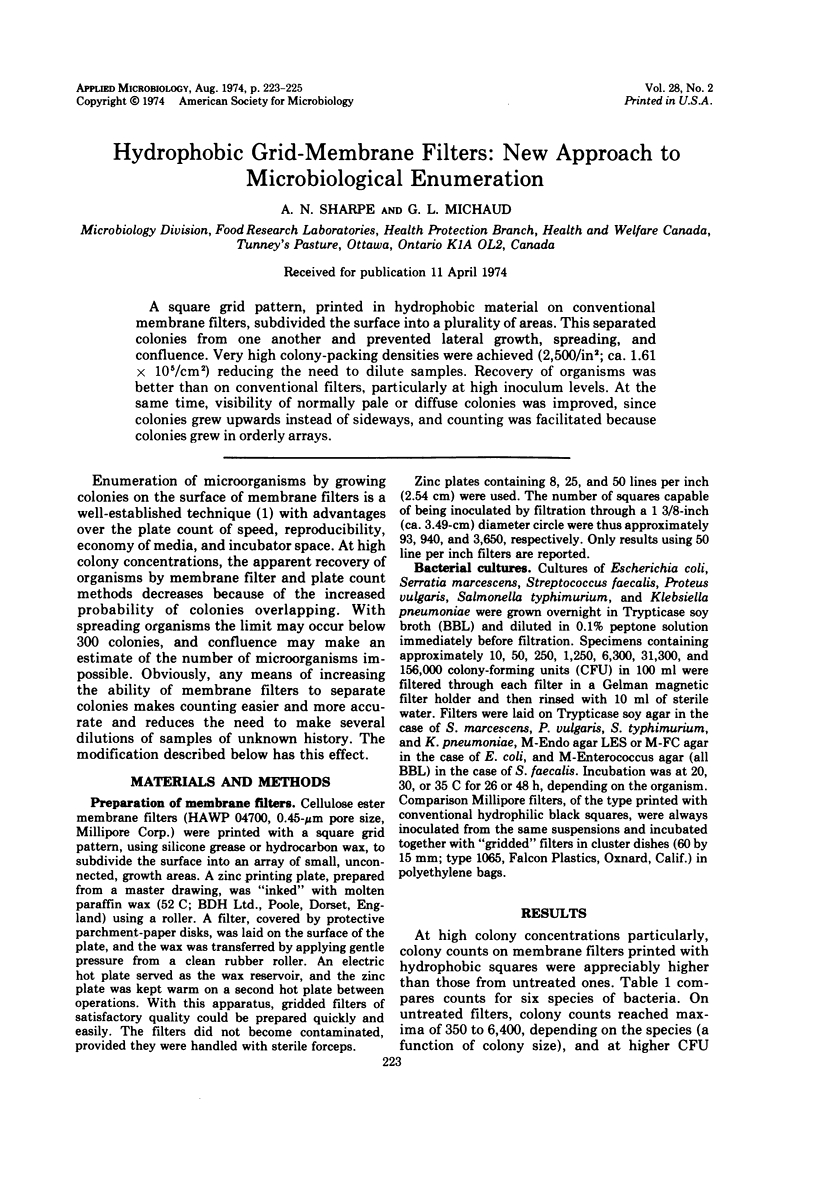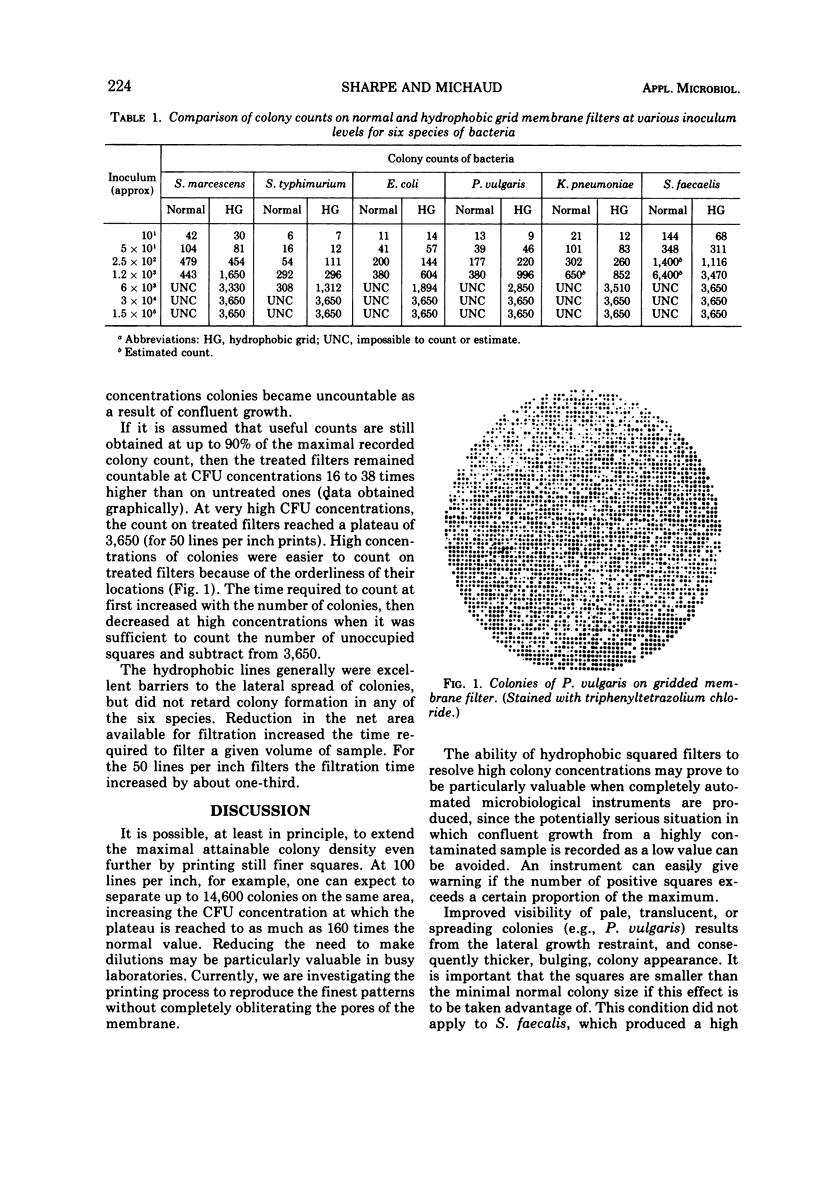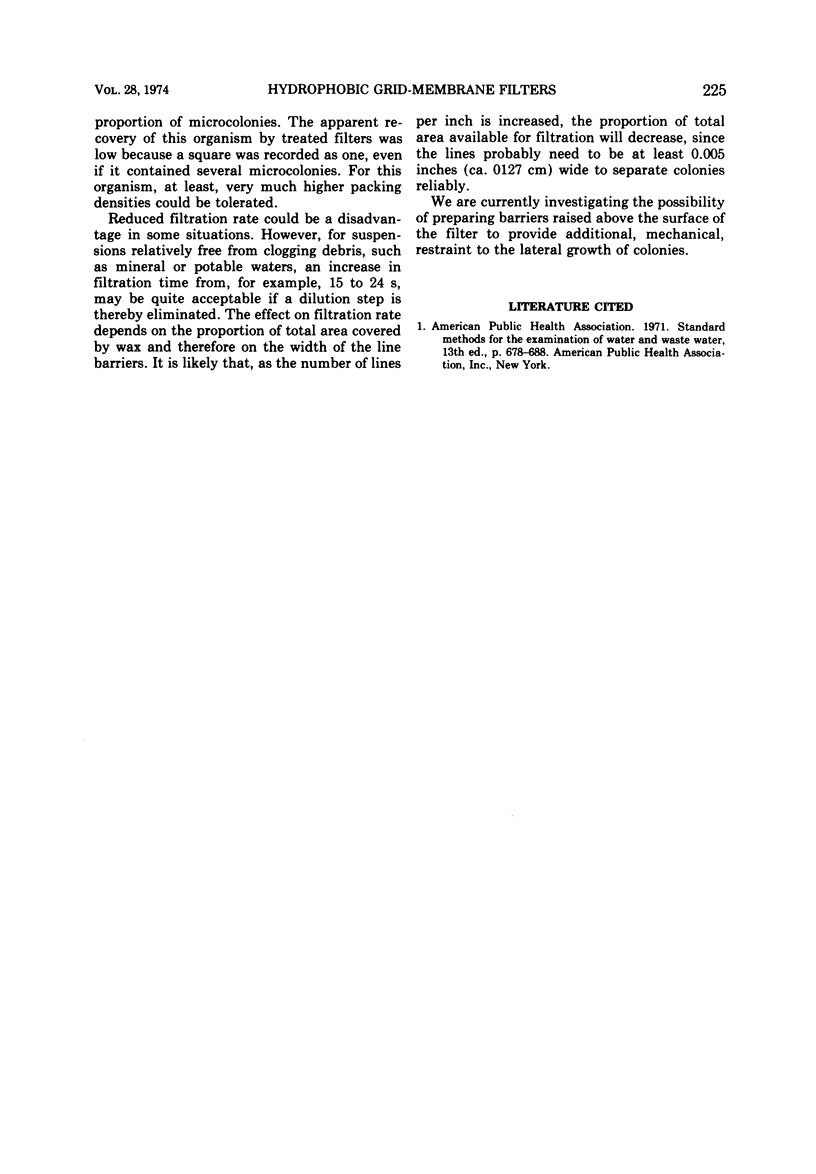Abstract
A square grid pattern, printed in hydrophobic material on conventional membrane filters, subdivided the surface into a plurality of areas. This separated colonies from one another and prevented lateral growth, spreading, and confluence. Very high colony-packing densities were achieved (2,500/in2; ca. 1.61 × 105/cm2) reducing the need to dilute samples. Recovery of organisms was better than on conventional filters, particularly at high inoculum levels. At the same time, visibility of normally pale or diffuse colonies was improved, since colonies grew upwards instead of sideways, and counting was facilitated because colonies grew in orderly arrays.
Full text
PDF




